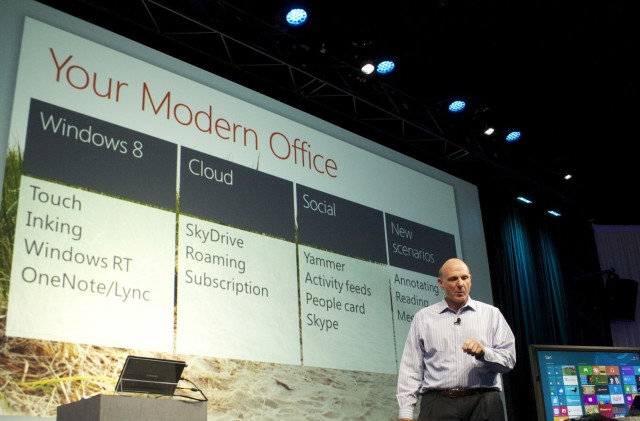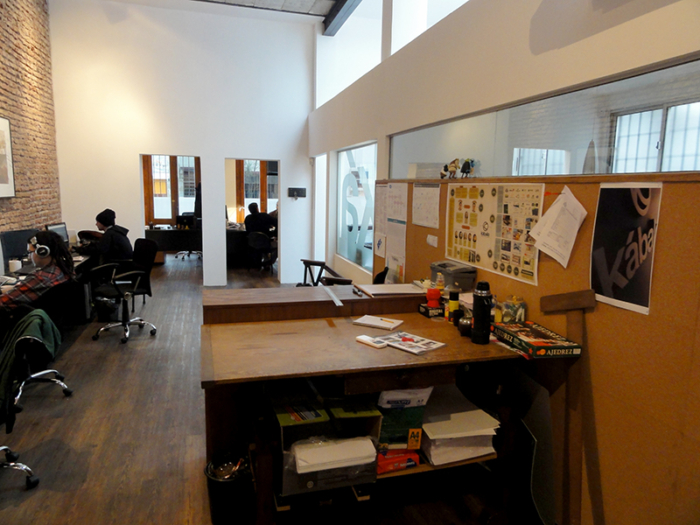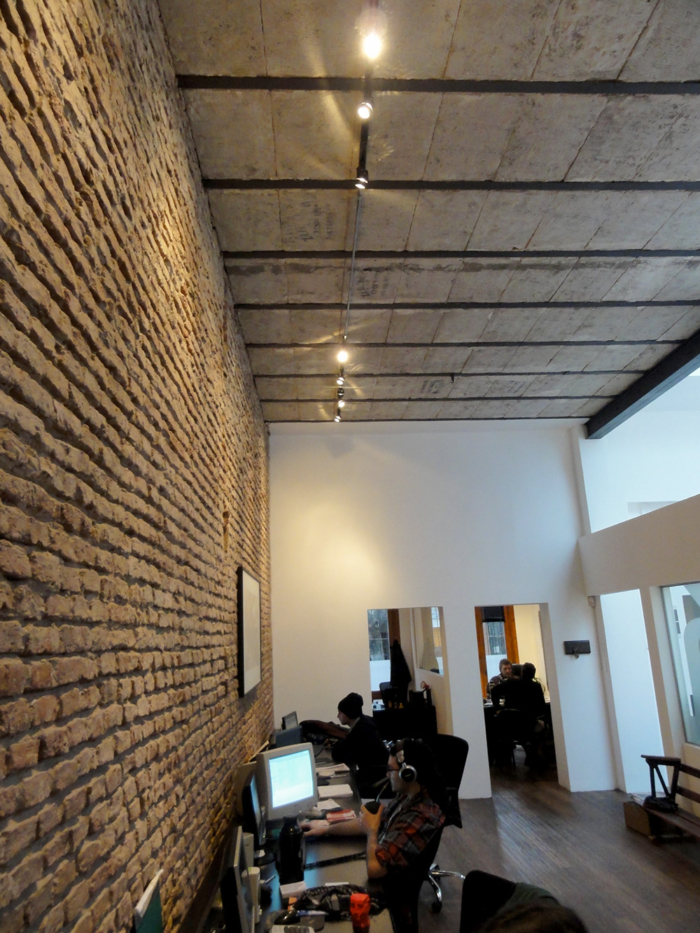SpaceX's Historic Mission: Gotta-See Videos: Compared to NASA, SpaceX are the newcomers to the Space world, but though their history is short, the Dragon mission was phenomenally successful and inspiring.
DIGITAL JUICE
Tuesday, July 31, 2012
Country diary: Horseshoe Quarry, Derbyshire: Secrets of a limestone quarry
Country diary: Horseshoe Quarry, Derbyshire: Secrets of a limestone quarry:

Horseshoe Quarry, Derbyshire: I'm standing on what was then the equator, submerged in a shallow sea teeming with brachiopods and crinoids
Millions of tons of rock are still quarried from the Peak District each year. We're like a dog with a bone, anxious for the marrow, gnawing at the scarred landscape. Yet with time and patient attention, the green comes rushing back. At Horseshoe Quarry in Middleton Dale, the rain is falling steadily, as it seems to have done for the whole summer. The limestone here went for roads, steel and cement. After it closed in 1969, the place became sour and scruffy.
Now the choking brambles and rubbish have been cleared, thanks to my companion Henry Folkard and his team of volunteers. At Henry's urging, the British Mountaineering Council bought Horseshoe in 2005, with the intention of doing as much for conservation as access. There's a new pond for newts, and the meadows above the cliffs are thick with orchids. The willows have spread greenly at the foot of the crag. There are cowslips, yellow rattle and ploughman's spikenard. Henry guides me to a rocky corner lush with ferns: golden male, brittle bladder and maidenhair spleenwort. Yet my eye is drawn to a large floor of limestone, the size of a football pitch, that is largely devoid of plants. It seems a bleak reminder of the quarry's recent past, but Henry shows me its secret: a series of fossilised corals studding the grey floor of the quarry.
The limestone here was formed over 310m years ago, during the Carboniferous period. Where I'm standing now was then the equator, submerged in a shallow sea teeming with brachiopods and crinoids whose mineral remains accumulated on the ocean floor. Volcanic vents spewed lava and gases on to the floor of this lagoon, bringing with it the chlorites and other green-brown minerals known locally as toadstone – and visibly present at Horseshoe. The origins of the name are obscure: the mottled rock is said to have the colouration of a toad; German miners knew their seam of lead was finished when they came across toadstone, or todtstein – dead rock. I prefer the Derbyshire dialect version, t'owd stone – the old stone, a name that seems appropriate for the whole quarry, dissolving, like me, in the summer rain.
guardian.co.uk © 2012 Guardian News and Media Limited or its affiliated companies. All rights reserved. | Use of this content is subject to our Terms & Conditions | More Feeds



DIGITAL JUICE
Horseshoe Quarry, Derbyshire: I'm standing on what was then the equator, submerged in a shallow sea teeming with brachiopods and crinoids
Millions of tons of rock are still quarried from the Peak District each year. We're like a dog with a bone, anxious for the marrow, gnawing at the scarred landscape. Yet with time and patient attention, the green comes rushing back. At Horseshoe Quarry in Middleton Dale, the rain is falling steadily, as it seems to have done for the whole summer. The limestone here went for roads, steel and cement. After it closed in 1969, the place became sour and scruffy.
Now the choking brambles and rubbish have been cleared, thanks to my companion Henry Folkard and his team of volunteers. At Henry's urging, the British Mountaineering Council bought Horseshoe in 2005, with the intention of doing as much for conservation as access. There's a new pond for newts, and the meadows above the cliffs are thick with orchids. The willows have spread greenly at the foot of the crag. There are cowslips, yellow rattle and ploughman's spikenard. Henry guides me to a rocky corner lush with ferns: golden male, brittle bladder and maidenhair spleenwort. Yet my eye is drawn to a large floor of limestone, the size of a football pitch, that is largely devoid of plants. It seems a bleak reminder of the quarry's recent past, but Henry shows me its secret: a series of fossilised corals studding the grey floor of the quarry.
The limestone here was formed over 310m years ago, during the Carboniferous period. Where I'm standing now was then the equator, submerged in a shallow sea teeming with brachiopods and crinoids whose mineral remains accumulated on the ocean floor. Volcanic vents spewed lava and gases on to the floor of this lagoon, bringing with it the chlorites and other green-brown minerals known locally as toadstone – and visibly present at Horseshoe. The origins of the name are obscure: the mottled rock is said to have the colouration of a toad; German miners knew their seam of lead was finished when they came across toadstone, or todtstein – dead rock. I prefer the Derbyshire dialect version, t'owd stone – the old stone, a name that seems appropriate for the whole quarry, dissolving, like me, in the summer rain.
guardian.co.uk © 2012 Guardian News and Media Limited or its affiliated companies. All rights reserved. | Use of this content is subject to our Terms & Conditions | More Feeds
DIGITAL JUICE
US farmers urge Obama administration to suspend ethanol quota amid drought
US farmers urge Obama administration to suspend ethanol quota amid drought:

EPA's requirements for corn ethanol will drive food prices even higher after an already distressed harvest, growers warn
The Obama administration was urged on Monday to stop diverting grain to gas amid warnings of an "imminent food crisis" caused by America's drought.
US government forecasts of a 4% rise in food prices for US consumers because of the drought have sharpened criticism of supports for producing fuel from corn-based ethanol.
Meanwhile, research published last week by the New England Complex Systems Institute warned of an "imminent food crisis" because of the diversion of corn stocks to ethanol.
"Necsi has warned for months that misguided food-to-ethanol conversion programs and rampant commodity speculation have created a food price bubble, leading to an inevitable spike in prices by 2013. Now it appears the "crop shock" will arrive even sooner due to drought, unless measures to curb ethanol production and rein in speculators are adopted immediately," the researchers warned.
In the latest move, the country's meat, dairy and poultry producers called on the Environmental Protection Agency to suspend this year's quotas for corn ethanol production.
"The extraordinary and disastrous circumstances created for livestock and poultry producers by the ongoing drought in the heart of our grain growing regions requires that all relevant measures of relief be explored," said the petition to the EPA's administrator Lisa Jackson.
It went on to warn that the requirement for corn ethanol production was further beating up corn prices, which were already at record levels because of the drought in the mid-west.
"We are worried about having enough corn, soybean and other crops at any price to feed our animals," Randy Spronk, the president of the National Pork Producers Association told a conference call with reporters.
Producers were already scaling back production, and some could be forced out of business entirely, said John Burkel, president of the Minnesota Turkey Growers' Association. "Even the most prudent and cautious producer could be put out of business," he said.
Under the EPA's renewable fuel standard programme, oil companies are required to dilute their gasoline with increasing amounts of biofuel every year. This year's mandate calls for the production of 13.2bn gallons of biofuels – almost all of it produced from corn.
Food security experts and international aid organisations have also warned that ethanol could be tightening up supplies and pushing up prices in the global food market during the drought.
Demand for corn ethanol was seen as a key driver of the 2007 and 2008 global food crisis.
About 40% of America's corn crop went for ethanol last year – although the refineries then sell on "distillers' grain" as animal feed.
But with expectations for a smaller harvest this year, there are fears ethanol will consume an even bigger share of the crop.
That will price corn out of reach of livestock producers as well as countries which rely heavily on imported grains, food security experts say.
Ethanol producers have already reduced production by more than 15% this year, and many refineries across the mid-west have closed because of high corn prices.
The National Corn Growers Association, which supports corn ethanol production, said in a statement that it was "premature" to suspend the incentive. "With the crop still in the field, it is too early to determine this year's final corn supply," it said in a statement.
guardian.co.uk © 2012 Guardian News and Media Limited or its affiliated companies. All rights reserved. | Use of this content is subject to our Terms & Conditions | More Feeds



DIGITAL JUICE
EPA's requirements for corn ethanol will drive food prices even higher after an already distressed harvest, growers warn
The Obama administration was urged on Monday to stop diverting grain to gas amid warnings of an "imminent food crisis" caused by America's drought.
US government forecasts of a 4% rise in food prices for US consumers because of the drought have sharpened criticism of supports for producing fuel from corn-based ethanol.
Meanwhile, research published last week by the New England Complex Systems Institute warned of an "imminent food crisis" because of the diversion of corn stocks to ethanol.
"Necsi has warned for months that misguided food-to-ethanol conversion programs and rampant commodity speculation have created a food price bubble, leading to an inevitable spike in prices by 2013. Now it appears the "crop shock" will arrive even sooner due to drought, unless measures to curb ethanol production and rein in speculators are adopted immediately," the researchers warned.
In the latest move, the country's meat, dairy and poultry producers called on the Environmental Protection Agency to suspend this year's quotas for corn ethanol production.
"The extraordinary and disastrous circumstances created for livestock and poultry producers by the ongoing drought in the heart of our grain growing regions requires that all relevant measures of relief be explored," said the petition to the EPA's administrator Lisa Jackson.
It went on to warn that the requirement for corn ethanol production was further beating up corn prices, which were already at record levels because of the drought in the mid-west.
"We are worried about having enough corn, soybean and other crops at any price to feed our animals," Randy Spronk, the president of the National Pork Producers Association told a conference call with reporters.
Producers were already scaling back production, and some could be forced out of business entirely, said John Burkel, president of the Minnesota Turkey Growers' Association. "Even the most prudent and cautious producer could be put out of business," he said.
Under the EPA's renewable fuel standard programme, oil companies are required to dilute their gasoline with increasing amounts of biofuel every year. This year's mandate calls for the production of 13.2bn gallons of biofuels – almost all of it produced from corn.
Food security experts and international aid organisations have also warned that ethanol could be tightening up supplies and pushing up prices in the global food market during the drought.
Demand for corn ethanol was seen as a key driver of the 2007 and 2008 global food crisis.
About 40% of America's corn crop went for ethanol last year – although the refineries then sell on "distillers' grain" as animal feed.
But with expectations for a smaller harvest this year, there are fears ethanol will consume an even bigger share of the crop.
That will price corn out of reach of livestock producers as well as countries which rely heavily on imported grains, food security experts say.
Ethanol producers have already reduced production by more than 15% this year, and many refineries across the mid-west have closed because of high corn prices.
The National Corn Growers Association, which supports corn ethanol production, said in a statement that it was "premature" to suspend the incentive. "With the crop still in the field, it is too early to determine this year's final corn supply," it said in a statement.
guardian.co.uk © 2012 Guardian News and Media Limited or its affiliated companies. All rights reserved. | Use of this content is subject to our Terms & Conditions | More Feeds
DIGITAL JUICE
South African schoolboy wows Google with Kruger wildlife-tracking website
South African schoolboy wows Google with Kruger wildlife-tracking website:

Google in talks with Nadav Ossendryver, 16, over website offering real-time updates on animal locations in Kruger park
In the decadent days when Theodore Roosevelt and British royals led African hunting expeditions, they had to rely on local trackers, patience and luck in their quest to bag "the big five".
Today's tourists, armed with cameras instead of guns, still find timing is everything when scanning the savannah for buffalo, elephant, leopard, lion and rhino.
However, A 16-year-old schoolboy has found a hi-tech solution. Nadav Ossendryver's website, Kruger Sightings, provides real-time updates on wildlife sightings in South Africa's world famous Kruger national park.
"Leopard feeding in tree", said one post on Monday. "3 wild dogs" read another. "2 male lions 4km south of lower Sabie across river bank", noted a third.
Ossendryver has taken a familiar concept, crowdsourcing, and transposed it to an African setting.
In just eight months he has reportedly gained 18,000 followers, including in Britain, America and India, and caught the eye of staff at Google, which wants to find ways to commercialise his idea.
The idea came to him because he grew tired of nagging his parents to ask passing motorists in the park where the best wildlife sightings were, South Africa's Sunday Times said. He set up a blog that grew into Kruger Sightings. Now he gets up early, before Kruger park opens each morning, so he can post immediate updates based on information from visitors using Twitter, Facebook, BlackBerry messenger or the website itself.
Not even his school in Johannesburg gets in the way, as he continues to run the site during breaks.
"I feel for all the people in Kruger park relying on me," Ossendryver told the Sunday Times, adding that the South Africa National Parks made him their first virtual honorary ranger.
Established in 1898, Kruger spans nearly 2m hectares and contains a rich diversity of species: 336 types of trees, 49 fish, 34 amphibians, 114 reptiles, 507 birds and 147 mammals.
Ossendryver began collecting data when his family visited the park five years ago. "I can tell you every lion I saw, what it was doing, where it was and the weather at the time," he told the paper. "I love everything about the game reserve. You can go 1,000 times and never see the same thing. I could spend all day there, but not all day on the beach."
The site has helped him spot 13 lions, six leopards, three cheetahs and four wild dogs in his past two trips, he added. It also carries contact numbers to report rhino poaching which, fuelled by rising demand for horn in the Far East, has resulted in 281 of the animals dying this year.
guardian.co.uk © 2012 Guardian News and Media Limited or its affiliated companies. All rights reserved. | Use of this content is subject to our Terms & Conditions | More Feeds



DIGITAL JUICE
Google in talks with Nadav Ossendryver, 16, over website offering real-time updates on animal locations in Kruger park
In the decadent days when Theodore Roosevelt and British royals led African hunting expeditions, they had to rely on local trackers, patience and luck in their quest to bag "the big five".
Today's tourists, armed with cameras instead of guns, still find timing is everything when scanning the savannah for buffalo, elephant, leopard, lion and rhino.
However, A 16-year-old schoolboy has found a hi-tech solution. Nadav Ossendryver's website, Kruger Sightings, provides real-time updates on wildlife sightings in South Africa's world famous Kruger national park.
"Leopard feeding in tree", said one post on Monday. "3 wild dogs" read another. "2 male lions 4km south of lower Sabie across river bank", noted a third.
Ossendryver has taken a familiar concept, crowdsourcing, and transposed it to an African setting.
In just eight months he has reportedly gained 18,000 followers, including in Britain, America and India, and caught the eye of staff at Google, which wants to find ways to commercialise his idea.
The idea came to him because he grew tired of nagging his parents to ask passing motorists in the park where the best wildlife sightings were, South Africa's Sunday Times said. He set up a blog that grew into Kruger Sightings. Now he gets up early, before Kruger park opens each morning, so he can post immediate updates based on information from visitors using Twitter, Facebook, BlackBerry messenger or the website itself.
Not even his school in Johannesburg gets in the way, as he continues to run the site during breaks.
"I feel for all the people in Kruger park relying on me," Ossendryver told the Sunday Times, adding that the South Africa National Parks made him their first virtual honorary ranger.
Established in 1898, Kruger spans nearly 2m hectares and contains a rich diversity of species: 336 types of trees, 49 fish, 34 amphibians, 114 reptiles, 507 birds and 147 mammals.
Ossendryver began collecting data when his family visited the park five years ago. "I can tell you every lion I saw, what it was doing, where it was and the weather at the time," he told the paper. "I love everything about the game reserve. You can go 1,000 times and never see the same thing. I could spend all day there, but not all day on the beach."
The site has helped him spot 13 lions, six leopards, three cheetahs and four wild dogs in his past two trips, he added. It also carries contact numbers to report rhino poaching which, fuelled by rising demand for horn in the Far East, has resulted in 281 of the animals dying this year.
guardian.co.uk © 2012 Guardian News and Media Limited or its affiliated companies. All rights reserved. | Use of this content is subject to our Terms & Conditions | More Feeds
DIGITAL JUICE
Anti-nuclear campaigners launch Japan's first green party
Anti-nuclear campaigners launch Japan's first green party:

Greens Japan promises voters to put environment first and abolish nuclear power plants
Anti-nuclear campaigners in Japan have launched the country's first green party, more than a year after the triple meltdown at Fukushima Daiichi power plant created a groundswell of opposition to atomic energy.
Greens Japan, created by local politicians and activists, hopes to satisfy the legal requirements to become an officially recognised political party in time for the general election, which must be held by next summer but could come much earlier.
The party said it would offer voters a viable alternative to the two main parties, both of which have retained their support for nuclear power, particularly after the recent decision to restart two nuclear reactors in western Japan.
The ruling Democratic party of Japan and the minority opposition Liberal democratic party [LDP] both supported the nuclear restart, which came after Japan was briefly left without nuclear power for the first time in more than 40 years.
Akira Miyabe, Greens Japan's deputy leader, said voters had been deprived of the chance to support a party that puts nuclear abolition and other green policies at the top of its agenda. "We need a party that puts the environment first," he said at a launch event in Tokyo.
The 1,000-member party is still a gathering of disparate groups and local politicians, but believes it can emulate green parties in Germany and other parts of Europe and influence the national debate over energy policy.
Nao Suguro, a co-leader of the party who sits on a local assembly in Tokyo, said the aim was "to create a broad network to accommodate calls for the abolition of nuclear power plants."
The party will struggle to field any candidates if, as some predict, the prime minister, Yoshihiko Noda, calls a snap lower house election. But it said it was prepared to put up about 10 candidates in next summer's upper house elections.
Recent demonstrations in Tokyo suggest Japan's anti-nuclear movement has broken free of its long association with socialist and pacifist movements to include younger campaigners, many of whom are protesting for the first time.
The protests are among the biggest Japan has seen in decades, although they have not succeeded in forcing Noda to reconsider his support for the restart of several reactors to avoid power cuts and lessen Japan's dependence on expensive fossil fuel imports.
While thousands of demonstrators held a candlelit vigil and formed a chain around the parliament building in Tokyo on Sunday night, voters in Yamaguchi prefecture in south-west Japan elected a pro-nuclear governor in a poll that some saw as a litmus test of Japan's enthusiasm for atomic energy.
Shigetaro Yamamoto, a former bureaucrat who was supported by the conservative LDP, defeated three rivals, including Tetsunari Iida, who had campaigned against the proposed construction of a nuclear power plant in the area. That vote came after other recent wins for pro-nuclear candidates in local elections.
The government is currently sounding out public opinion on three options for nuclear energy's share of the country's energy mix in 2030: zero, 15% or 20-25%. Japan depended on nuclear power for about a third of its energy needs before the 11 March disaster.
guardian.co.uk © 2012 Guardian News and Media Limited or its affiliated companies. All rights reserved. | Use of this content is subject to our Terms & Conditions | More Feeds



DIGITAL JUICE
Greens Japan promises voters to put environment first and abolish nuclear power plants
Anti-nuclear campaigners in Japan have launched the country's first green party, more than a year after the triple meltdown at Fukushima Daiichi power plant created a groundswell of opposition to atomic energy.
Greens Japan, created by local politicians and activists, hopes to satisfy the legal requirements to become an officially recognised political party in time for the general election, which must be held by next summer but could come much earlier.
The party said it would offer voters a viable alternative to the two main parties, both of which have retained their support for nuclear power, particularly after the recent decision to restart two nuclear reactors in western Japan.
The ruling Democratic party of Japan and the minority opposition Liberal democratic party [LDP] both supported the nuclear restart, which came after Japan was briefly left without nuclear power for the first time in more than 40 years.
Akira Miyabe, Greens Japan's deputy leader, said voters had been deprived of the chance to support a party that puts nuclear abolition and other green policies at the top of its agenda. "We need a party that puts the environment first," he said at a launch event in Tokyo.
The 1,000-member party is still a gathering of disparate groups and local politicians, but believes it can emulate green parties in Germany and other parts of Europe and influence the national debate over energy policy.
Nao Suguro, a co-leader of the party who sits on a local assembly in Tokyo, said the aim was "to create a broad network to accommodate calls for the abolition of nuclear power plants."
The party will struggle to field any candidates if, as some predict, the prime minister, Yoshihiko Noda, calls a snap lower house election. But it said it was prepared to put up about 10 candidates in next summer's upper house elections.
Recent demonstrations in Tokyo suggest Japan's anti-nuclear movement has broken free of its long association with socialist and pacifist movements to include younger campaigners, many of whom are protesting for the first time.
The protests are among the biggest Japan has seen in decades, although they have not succeeded in forcing Noda to reconsider his support for the restart of several reactors to avoid power cuts and lessen Japan's dependence on expensive fossil fuel imports.
While thousands of demonstrators held a candlelit vigil and formed a chain around the parliament building in Tokyo on Sunday night, voters in Yamaguchi prefecture in south-west Japan elected a pro-nuclear governor in a poll that some saw as a litmus test of Japan's enthusiasm for atomic energy.
Shigetaro Yamamoto, a former bureaucrat who was supported by the conservative LDP, defeated three rivals, including Tetsunari Iida, who had campaigned against the proposed construction of a nuclear power plant in the area. That vote came after other recent wins for pro-nuclear candidates in local elections.
The government is currently sounding out public opinion on three options for nuclear energy's share of the country's energy mix in 2030: zero, 15% or 20-25%. Japan depended on nuclear power for about a third of its energy needs before the 11 March disaster.
guardian.co.uk © 2012 Guardian News and Media Limited or its affiliated companies. All rights reserved. | Use of this content is subject to our Terms & Conditions | More Feeds
DIGITAL JUICE
What evidence will convince sceptics?
What evidence will convince sceptics?:

Prof Richard Muller's research showing the world is warming and humans are largely to blame is being rejected by climate sceptics
So, that's it then. The climate wars are over. Climate sceptics have accepted the main tenets of climate science – that the world is warming and that humans are largely to blame – and we can all now get on to debating the real issue at hand: what, if anything, do we do about it?
If only. Yesterday's announcement by Prof Richard Muller that, as a result of his Berkeley Earth Surface Temperature (Best) project's research, he had undergone a "total turnaround" in his views on climate science and now accepted that the Earth's land has warmed by 1.5C over the past 250 years and that "humans are almost entirely the cause", might be seen by many as a watershed moment in this long, often bitter debate. But not, it would appear, for climate sceptics - the very people he designed his project to please.
Rather than join Muller on his road to Damascus, many climate sceptics have predictably been tempted by the neon signs directing them to turn back instead. Muller, as a result of his "conversion", is now being painted as a figure of distrust and scorn, in much the same way that they have viewed many climate scientists over the years. His research methodologies and results are being mocked and slammed for being simplistic and "agenda driven".
Climate sceptics know better, of course, and are heralding (at first, via a bizarrely histrionic preview) a conveniently timed piece of research of their own, which they say, "devastatingly" undermines all other known work in this field. The tills at Hubris 'R Us have certainly been ringing loudly over the past few days.
In one sense, you could say all of this is symptomatic of healthy scientific enquiry. Claim and counter claim are being tested, reviewed and published online to allow full transparency and scrutiny. There are no hiding places. Our scientific understanding of the planet's climate – and the forces that drive it - are advancing incrementally, yet assuredly. The truth will out.
I would like to hug this idealistic vision tightly to my chest, but I know – as the saying goes – it's a bit more complicated than that. There are far more factors at play (on both "sides" of the debate) than mere "science" and that murky soup includes - to name just a few ingredients - ideology, vested interest, confirmation bias and a suite of formal and informal fallacies. I can't comment on either of the latest results being presented by both Muller and Watts et al (who claim that US temperature trends over the past few decades have been "spuriously doubled"). Neither has been peer-reviewed or published in an academic journal so any conclusions seem premature.
What is clear, though, is that Muller's results are largely symbolic, as opposed to representing a genuine leap forward in scientific understanding. His team's results are broadly in synch with what mainstream climate science has been claiming for well over a decade.
The power of his findings lay in the journey he has undertaken to arrive at his conclusions. He has sought to address key concerns of climate sceptics about temperature reconstructions (many of which he had himself), as well as investigate why the world has warmed in the way it has over the past couple of centuries. In effect, he has laid down a challenge to climate sceptics (who, I admit, come in many flavours) to come up with a better-evidenced theory than mankind's emissions being the key reason why temperatures have risen. As he himself says: "To be considered seriously, an alternative explanation must match the data at least as well as carbon dioxide does."
The key question for me is whether climate sceptics actually want to tackle that all-important question. What evidence will it take to convince them? Are they forever destined to keep saying "it's not enough for us"? When does the balance of risk tip over in favour of them accepting that pumping ever more greenhouse gases into the atmosphere is not a wise thing to keep on doing?
guardian.co.uk © 2012 Guardian News and Media Limited or its affiliated companies. All rights reserved. | Use of this content is subject to our Terms & Conditions | More Feeds



DIGITAL JUICE
Prof Richard Muller's research showing the world is warming and humans are largely to blame is being rejected by climate sceptics
So, that's it then. The climate wars are over. Climate sceptics have accepted the main tenets of climate science – that the world is warming and that humans are largely to blame – and we can all now get on to debating the real issue at hand: what, if anything, do we do about it?
If only. Yesterday's announcement by Prof Richard Muller that, as a result of his Berkeley Earth Surface Temperature (Best) project's research, he had undergone a "total turnaround" in his views on climate science and now accepted that the Earth's land has warmed by 1.5C over the past 250 years and that "humans are almost entirely the cause", might be seen by many as a watershed moment in this long, often bitter debate. But not, it would appear, for climate sceptics - the very people he designed his project to please.
Rather than join Muller on his road to Damascus, many climate sceptics have predictably been tempted by the neon signs directing them to turn back instead. Muller, as a result of his "conversion", is now being painted as a figure of distrust and scorn, in much the same way that they have viewed many climate scientists over the years. His research methodologies and results are being mocked and slammed for being simplistic and "agenda driven".
Climate sceptics know better, of course, and are heralding (at first, via a bizarrely histrionic preview) a conveniently timed piece of research of their own, which they say, "devastatingly" undermines all other known work in this field. The tills at Hubris 'R Us have certainly been ringing loudly over the past few days.
In one sense, you could say all of this is symptomatic of healthy scientific enquiry. Claim and counter claim are being tested, reviewed and published online to allow full transparency and scrutiny. There are no hiding places. Our scientific understanding of the planet's climate – and the forces that drive it - are advancing incrementally, yet assuredly. The truth will out.
I would like to hug this idealistic vision tightly to my chest, but I know – as the saying goes – it's a bit more complicated than that. There are far more factors at play (on both "sides" of the debate) than mere "science" and that murky soup includes - to name just a few ingredients - ideology, vested interest, confirmation bias and a suite of formal and informal fallacies. I can't comment on either of the latest results being presented by both Muller and Watts et al (who claim that US temperature trends over the past few decades have been "spuriously doubled"). Neither has been peer-reviewed or published in an academic journal so any conclusions seem premature.
What is clear, though, is that Muller's results are largely symbolic, as opposed to representing a genuine leap forward in scientific understanding. His team's results are broadly in synch with what mainstream climate science has been claiming for well over a decade.
The power of his findings lay in the journey he has undertaken to arrive at his conclusions. He has sought to address key concerns of climate sceptics about temperature reconstructions (many of which he had himself), as well as investigate why the world has warmed in the way it has over the past couple of centuries. In effect, he has laid down a challenge to climate sceptics (who, I admit, come in many flavours) to come up with a better-evidenced theory than mankind's emissions being the key reason why temperatures have risen. As he himself says: "To be considered seriously, an alternative explanation must match the data at least as well as carbon dioxide does."
The key question for me is whether climate sceptics actually want to tackle that all-important question. What evidence will it take to convince them? Are they forever destined to keep saying "it's not enough for us"? When does the balance of risk tip over in favour of them accepting that pumping ever more greenhouse gases into the atmosphere is not a wise thing to keep on doing?
guardian.co.uk © 2012 Guardian News and Media Limited or its affiliated companies. All rights reserved. | Use of this content is subject to our Terms & Conditions | More Feeds
DIGITAL JUICE
Japanese tsunami dock to be destroyed
Japanese tsunami dock to be destroyed:

Debris that has floated across the Pacific is home to several invasive species that pose a threat to local marine wildlife
Demolition experts on the west coast of the United States will this week tackle a continuing environmental threat created by last year's Japanese devastating earthquake and tsunami.
A 20-metre long dock that washed up on the coast of Oregon will be broken up and removed following fears over the possible spread of invasive plant and animal species.
The huge piece of tsunami debris appeared at Agate Beach in Newport, Oregon, on 5 June after floating more than 7,000 kilometres from the port of Misawa on the north-west Japanese coast.
Workers from the Ballard Diving and Salvage company will cut the concrete and steel structure into five sections and remove them for disposal. A small portion will be mounted in the city as a memorial to the victims of the tsunami, which killed at least 15,000 people.
Some parts of California and Oregon suffered direct damage from a small tsunami created by the magnitude 9.0 Tōhoku earthquake on 11 March 2011, but the potential environmental impacts on the west coast of the United States of the catastrophic waves that hit Japan linger on more than a year later.
Some local residents and businesses in Newport had suggested that the Japanese dock could be dragged into the city's harbour to replace wooden ones which were largely destroyed in a winter storm at the start of the year, and so provide a new home for a colony of California sea lions.
However, state officials rejected the plan because of the danger posed by marine wildlife that accompanied the dock on its journey across the Pacific Ocean.
Scientists from Oregon State University who have been examining the structure have found and destroyed more than 90 different species of seaweed, molluscs, and other marine organisms. But there are still concerns about the impact of sea life that remain underneath and inside the dock, that weighs up to 150 tonnes.
The scientists expressed surprise about how many organisms managed to survive for 15 months in the open waters of the Pacific Ocean without access to their usual habitats and sources of food.
They warned in particular that the Northern Pacific seastar, the Japanese shore crab, and wakame kelp, specimens of which have already been removed from the dock, have the potential to colonise the surrounding shore, threatening local wildlife and causing economic damage.
Wakame kelp can grow on and interfere with the normal operation of docks, ship hulls, nets, fishing gear, moorings, ropes, for example. It can also grow quickly into large beds that block out the sunlight needed by other seaweed and algae. Wakame kelp is listed among the 100 worst invasive species around the world.
The Northern Pacific seastar has a voracious appetite and could devastate native species on which it would prey. It is notoriously difficult to eliminate once it is established because its larvae can be transported to new locations in the ballast of ships.
The Japanese shore crab, also known as the Asian shore crab, already creates problems as an invasive species along parts of the east coast of the United States. It reproduces many times a year, and can quickly outnumber and displace native crabs. It has also been known to feed on the larvae of lobsters and other commercially important species.
The annual cost in the United States of controlling and dealing with the damage caused by invasive plants and animals is estimated to be $138bn. Oregon alone spends more than $400m each year on preventing and tackling exotic land and aquatic species. State authorities are used to the risks associated with the ballast of ships, but are now also encouraging coastal residents to be vigilant about debris from the Japanese tsunami.
The Japanese government thinks that more than 5 million tonnes of wreckage were washed into the Pacific Ocean by the tsunami, and while about 70% may have sunk immediately, a further 1.5m tonnes remained afloat. The United States National Oceanic and Atmospheric Administration is monitoring possible sightings all across the northern Pacific and along the coast of North America.
It is not known how much of the debris maybe hosting alien plants and animals could invade other Pacific shorelines. However, it is expected to pose a hazard for at least another two years, extending the environmental impact of the terrible tsunami far beyond the national borders of Japan.
guardian.co.uk © 2012 Guardian News and Media Limited or its affiliated companies. All rights reserved. | Use of this content is subject to our Terms & Conditions | More Feeds



DIGITAL JUICE
Debris that has floated across the Pacific is home to several invasive species that pose a threat to local marine wildlife
Demolition experts on the west coast of the United States will this week tackle a continuing environmental threat created by last year's Japanese devastating earthquake and tsunami.
A 20-metre long dock that washed up on the coast of Oregon will be broken up and removed following fears over the possible spread of invasive plant and animal species.
The huge piece of tsunami debris appeared at Agate Beach in Newport, Oregon, on 5 June after floating more than 7,000 kilometres from the port of Misawa on the north-west Japanese coast.
Workers from the Ballard Diving and Salvage company will cut the concrete and steel structure into five sections and remove them for disposal. A small portion will be mounted in the city as a memorial to the victims of the tsunami, which killed at least 15,000 people.
Some parts of California and Oregon suffered direct damage from a small tsunami created by the magnitude 9.0 Tōhoku earthquake on 11 March 2011, but the potential environmental impacts on the west coast of the United States of the catastrophic waves that hit Japan linger on more than a year later.
Some local residents and businesses in Newport had suggested that the Japanese dock could be dragged into the city's harbour to replace wooden ones which were largely destroyed in a winter storm at the start of the year, and so provide a new home for a colony of California sea lions.
However, state officials rejected the plan because of the danger posed by marine wildlife that accompanied the dock on its journey across the Pacific Ocean.
Scientists from Oregon State University who have been examining the structure have found and destroyed more than 90 different species of seaweed, molluscs, and other marine organisms. But there are still concerns about the impact of sea life that remain underneath and inside the dock, that weighs up to 150 tonnes.
The scientists expressed surprise about how many organisms managed to survive for 15 months in the open waters of the Pacific Ocean without access to their usual habitats and sources of food.
They warned in particular that the Northern Pacific seastar, the Japanese shore crab, and wakame kelp, specimens of which have already been removed from the dock, have the potential to colonise the surrounding shore, threatening local wildlife and causing economic damage.
Wakame kelp can grow on and interfere with the normal operation of docks, ship hulls, nets, fishing gear, moorings, ropes, for example. It can also grow quickly into large beds that block out the sunlight needed by other seaweed and algae. Wakame kelp is listed among the 100 worst invasive species around the world.
The Northern Pacific seastar has a voracious appetite and could devastate native species on which it would prey. It is notoriously difficult to eliminate once it is established because its larvae can be transported to new locations in the ballast of ships.
The Japanese shore crab, also known as the Asian shore crab, already creates problems as an invasive species along parts of the east coast of the United States. It reproduces many times a year, and can quickly outnumber and displace native crabs. It has also been known to feed on the larvae of lobsters and other commercially important species.
The annual cost in the United States of controlling and dealing with the damage caused by invasive plants and animals is estimated to be $138bn. Oregon alone spends more than $400m each year on preventing and tackling exotic land and aquatic species. State authorities are used to the risks associated with the ballast of ships, but are now also encouraging coastal residents to be vigilant about debris from the Japanese tsunami.
The Japanese government thinks that more than 5 million tonnes of wreckage were washed into the Pacific Ocean by the tsunami, and while about 70% may have sunk immediately, a further 1.5m tonnes remained afloat. The United States National Oceanic and Atmospheric Administration is monitoring possible sightings all across the northern Pacific and along the coast of North America.
It is not known how much of the debris maybe hosting alien plants and animals could invade other Pacific shorelines. However, it is expected to pose a hazard for at least another two years, extending the environmental impact of the terrible tsunami far beyond the national borders of Japan.
guardian.co.uk © 2012 Guardian News and Media Limited or its affiliated companies. All rights reserved. | Use of this content is subject to our Terms & Conditions | More Feeds
DIGITAL JUICE
Stefanie Penn Spear: 5,000 People Unite in DC to Protest Fracking
Stefanie Penn Spear: 5,000 People Unite in DC to Protest Fracking:
More than 5,000 people from all over the nation, and various parts of the world, including Australia, united on July 28 on the west lawn of the U.S. Capitol demanding Congress take immediate action to stop fracking. After the rally that began at 2 p.m., rally participants marched for more than one hour, stopping at the headquarters of the America's Natural Gas Alliance and American Petroleum Institute.
People impacted by fracking in their communities joined forces with 136 local and national organizations to call on Congress to Stop the Frack Attack and protect Americans from the dangerous impacts of fracking.
Rally speakers included, Bill McKibben, co-founder of 350.org; Josh Fox, producer of Gasland; Calvin Tillman, former mayor of Dish, Texas; Allison Chin, board president of the Sierra Club, and community members from swing states affected by fracking.
"As the increasingly bizarre weather across the planet and melting ice on Greenland makes clear, at this point we've got no choice but to keep fossil fuels underground. Fracking to find more is the worst possible idea," said McKibben.
"The amazing thing about this problem is that there's a solution... We know that we can run the world on renewable energy. We know that we can run the world on the wind. And this weekend, we have a reminder that we can run the world on the sun," said Fox.
This weekend's rally was part of the first national event to stop the frack attack. The rally is the culmination of three days of training to further escalate the movement to stop abuse by the fossil fuel industry. Large groups from swing states including Ohio, Colorado, Pennsylvania and North Carolina attended the training and rally to make sure that fracking is a key part of the upcoming election.
"Just weeks ago in North Carolina, our legislature ripped up decades of groundwater protections for rural drinking water, in order to allow fracking and invite in dirty industry campaign dollars. So we add our voices to the national movement calling on Congress to protect our homes, our drinking water and our health by repealing the 2005 oil and gas exemptions," said Hope Taylor, a farmer near Durham and executive director of Clean Water for NC.
Rally participants have three key demands: an end to dirty and dangerous fracking, closure of the seven legal loopholes that let frackers in the oil and gas industry ignore the Safe Drinking Water Act, Clean Air Act and Clean Water Act, and full enforcement of existing laws to protect families and communities from the effects of fracking.
"It is time for us to come together as a people and let the law makers that work for us know that we are tired of being run over by the out-of-control oil and gas industry," said Tillman.
While at the headquarters of America's Natural Gas Alliance, rally organizers delivered six jugs of contaminated water in hazmat suits and then headed to the American Petroleum Institute where a 20-foot-high mock oil rig was smashed to the ground.
This event was a launching point for the movement, and will be followed by events in Albany, NY on Aug. 25, Philadelphia on Sept. 20 and Sept. 21, and subsequent events in other states and regions affected by fracking.
To see additional photos from the Stop the Frack Attack rally and march, visit EcoWatch's Facebook page.
Visit EcoWatch's fracking page for more related news on this topic.
Stefanie Penn Spear is editor of EcoWatch.org.
DIGITAL JUICE
More than 5,000 people from all over the nation, and various parts of the world, including Australia, united on July 28 on the west lawn of the U.S. Capitol demanding Congress take immediate action to stop fracking. After the rally that began at 2 p.m., rally participants marched for more than one hour, stopping at the headquarters of the America's Natural Gas Alliance and American Petroleum Institute.
People impacted by fracking in their communities joined forces with 136 local and national organizations to call on Congress to Stop the Frack Attack and protect Americans from the dangerous impacts of fracking.
Rally speakers included, Bill McKibben, co-founder of 350.org; Josh Fox, producer of Gasland; Calvin Tillman, former mayor of Dish, Texas; Allison Chin, board president of the Sierra Club, and community members from swing states affected by fracking.
"As the increasingly bizarre weather across the planet and melting ice on Greenland makes clear, at this point we've got no choice but to keep fossil fuels underground. Fracking to find more is the worst possible idea," said McKibben.
"The amazing thing about this problem is that there's a solution... We know that we can run the world on renewable energy. We know that we can run the world on the wind. And this weekend, we have a reminder that we can run the world on the sun," said Fox.
This weekend's rally was part of the first national event to stop the frack attack. The rally is the culmination of three days of training to further escalate the movement to stop abuse by the fossil fuel industry. Large groups from swing states including Ohio, Colorado, Pennsylvania and North Carolina attended the training and rally to make sure that fracking is a key part of the upcoming election.
"Just weeks ago in North Carolina, our legislature ripped up decades of groundwater protections for rural drinking water, in order to allow fracking and invite in dirty industry campaign dollars. So we add our voices to the national movement calling on Congress to protect our homes, our drinking water and our health by repealing the 2005 oil and gas exemptions," said Hope Taylor, a farmer near Durham and executive director of Clean Water for NC.
Rally participants have three key demands: an end to dirty and dangerous fracking, closure of the seven legal loopholes that let frackers in the oil and gas industry ignore the Safe Drinking Water Act, Clean Air Act and Clean Water Act, and full enforcement of existing laws to protect families and communities from the effects of fracking.
"It is time for us to come together as a people and let the law makers that work for us know that we are tired of being run over by the out-of-control oil and gas industry," said Tillman.
While at the headquarters of America's Natural Gas Alliance, rally organizers delivered six jugs of contaminated water in hazmat suits and then headed to the American Petroleum Institute where a 20-foot-high mock oil rig was smashed to the ground.
This event was a launching point for the movement, and will be followed by events in Albany, NY on Aug. 25, Philadelphia on Sept. 20 and Sept. 21, and subsequent events in other states and regions affected by fracking.
To see additional photos from the Stop the Frack Attack rally and march, visit EcoWatch's Facebook page.
Visit EcoWatch's fracking page for more related news on this topic.
Stefanie Penn Spear is editor of EcoWatch.org.
DIGITAL JUICE
PHOTOS: Father Sea Dragon Gives Rare Birth
PHOTOS: Father Sea Dragon Gives Rare Birth:
By Vetstreet's Kristen Seymour:
It's a birth for the books!
A weedy sea dragon father has hatched his first babies at SeaWorld Orlando. Yep, you read that right — we said his.
Male weedy sea dragons, which are found in tropical coastal waters off Australia, are the ones in charge of bearing young, just like the closely related sea horse.
According to SeaWorld, here's how it works: "The female deposits the eggs onto a spongy patch found on the underside of the male’s tail. The eggs are fertilized during this transfer and remain on their father for the next five to nine weeks. Dad is responsible for incubation and care of the eggs until they reach full term."
Truly Unique Aquarium Feat
This birth marks the first time that weedy sea dragon eggs have successfully hatched at SeaWorld. In fact, only three other aquariums in the U.S. have successfully bred the protected species, which has experienced a dramatic population drop due to human invasion and pollution.
And these babies are just the beginning: The female laid close to 100 eggs in June, which will hatch over the next couple of weeks.
Visitors can get a glimpse of the baby sea dragons within SeaWorld Orlando's Manta exhibit.
More from Vetstreet:
10 Most Dangerous Critters for Your Pets
8 Animals Who Could Easily Beat Olympic Record Holders
Endangered Sloths Thrive in Costa Rica
8 Zoos Helping Animals Edge Out of Extinction
PHOTOS AND CAPTIONS BELOW COURTESY OF SEAWORLD:

Nearly 100 small, pinkish eggs adorn a male weedy sea dragon, who is responsible for bearing young.

The weedy sea dragon eggs remain on father for five to nine weeks until they hatch.
DIGITAL JUICE
By Vetstreet's Kristen Seymour:
It's a birth for the books!
A weedy sea dragon father has hatched his first babies at SeaWorld Orlando. Yep, you read that right — we said his.
Male weedy sea dragons, which are found in tropical coastal waters off Australia, are the ones in charge of bearing young, just like the closely related sea horse.
According to SeaWorld, here's how it works: "The female deposits the eggs onto a spongy patch found on the underside of the male’s tail. The eggs are fertilized during this transfer and remain on their father for the next five to nine weeks. Dad is responsible for incubation and care of the eggs until they reach full term."
Truly Unique Aquarium Feat
This birth marks the first time that weedy sea dragon eggs have successfully hatched at SeaWorld. In fact, only three other aquariums in the U.S. have successfully bred the protected species, which has experienced a dramatic population drop due to human invasion and pollution.
And these babies are just the beginning: The female laid close to 100 eggs in June, which will hatch over the next couple of weeks.
Visitors can get a glimpse of the baby sea dragons within SeaWorld Orlando's Manta exhibit.
More from Vetstreet:
10 Most Dangerous Critters for Your Pets
8 Animals Who Could Easily Beat Olympic Record Holders
Endangered Sloths Thrive in Costa Rica
8 Zoos Helping Animals Edge Out of Extinction
PHOTOS AND CAPTIONS BELOW COURTESY OF SEAWORLD:

Nearly 100 small, pinkish eggs adorn a male weedy sea dragon, who is responsible for bearing young.

The weedy sea dragon eggs remain on father for five to nine weeks until they hatch.
DIGITAL JUICE
One Of The Hottest Summers Since 1950?
One Of The Hottest Summers Since 1950?:
By Wynne Parry, LiveScience Senior Writer:
As the month draws to an end, it's clear that July continued the trend for unusually warm weather for the United States.
Temperatures in June and the first week of July qualified this summer so far as one of the top-three hottest summers in the continental United States since 1950, said Bob Smerbeck, a senior meteorologist at Accuweather.com.
"I think it has a chance to get into the top three whether it is the top one remains to be seen, we still have the rest of July and August," Smerbeck told LiveScience.
An article in the news suggesting this month was on track to surpass the all-time record set in July 1936 is incorrect, Jake Crouch, a climate scientist here at NOAA's National Climatic Data Center, told LiveScience in an email. That statement, which appeared in USA Today, was the result of an inaccurate interpretation of weather data, he wrote. [Dry and Dying: Images of Summer Drought]
"However, July has been warmer than average, and it is likely that the month will conclude with July temperatures above the 20th-century average. At this time we cannot say with any certainty how much above average the July temperatures [it] will be," Crouch wrote.
Things could be worse. The core of heat in the middle part of the country has not expanded countrywide. Although heat waves have traveled eastward over the upper Great Lakes, through the Northeast and down into parts of the Southeast, they have not been sustained, Smerbeck said.
Since the beginning of June, the west coast is tracking at just below-average temperatures.
In June, a core of heat was centered over the high plains and extended to the eastern slopes of the Rocky Mountains. In July, this atmospheric system shifted east over the Midwest from Omaha to St. Louis and up towards Chicago, he said.
The jet stream, a band of high-altitude westerly winds, plays a role in this weather pattern by acting as a boundary between cool, northern air and warmer southern air. It was situated over northern California, then across the northern plains near the Canadian border before dipping southeast over the northeastern part of the country in late July, Smerbeck said.
The jet stream was deflected to the north over the center of the country by a high-pressure system, which is responsible for the core of heat. In this system, air sinks and warms, exacerbating the drought conditions.
Storms occur along the periphery of this high-pressure system, and they are responsible for bringing precipitation and cooler weather to areas to the north and east.
Precipitation over the southern Rockies and southwestern desert, particularly Arizona, has helped these regions catch up after dry conditions earlier, he said.
Follow Wynne Parry on Twitter @Wynne_ParryorLiveScience @livescience. We're also on Facebook & Google+.
Copyright 2012 LiveScience, a TechMediaNetwork company. All rights reserved. This material may not be published, broadcast, rewritten or redistributed.
DIGITAL JUICE
By Wynne Parry, LiveScience Senior Writer:
As the month draws to an end, it's clear that July continued the trend for unusually warm weather for the United States.
Temperatures in June and the first week of July qualified this summer so far as one of the top-three hottest summers in the continental United States since 1950, said Bob Smerbeck, a senior meteorologist at Accuweather.com.
"I think it has a chance to get into the top three whether it is the top one remains to be seen, we still have the rest of July and August," Smerbeck told LiveScience.
An article in the news suggesting this month was on track to surpass the all-time record set in July 1936 is incorrect, Jake Crouch, a climate scientist here at NOAA's National Climatic Data Center, told LiveScience in an email. That statement, which appeared in USA Today, was the result of an inaccurate interpretation of weather data, he wrote. [Dry and Dying: Images of Summer Drought]
"However, July has been warmer than average, and it is likely that the month will conclude with July temperatures above the 20th-century average. At this time we cannot say with any certainty how much above average the July temperatures [it] will be," Crouch wrote.
Things could be worse. The core of heat in the middle part of the country has not expanded countrywide. Although heat waves have traveled eastward over the upper Great Lakes, through the Northeast and down into parts of the Southeast, they have not been sustained, Smerbeck said.
Since the beginning of June, the west coast is tracking at just below-average temperatures.
In June, a core of heat was centered over the high plains and extended to the eastern slopes of the Rocky Mountains. In July, this atmospheric system shifted east over the Midwest from Omaha to St. Louis and up towards Chicago, he said.
The jet stream, a band of high-altitude westerly winds, plays a role in this weather pattern by acting as a boundary between cool, northern air and warmer southern air. It was situated over northern California, then across the northern plains near the Canadian border before dipping southeast over the northeastern part of the country in late July, Smerbeck said.
The jet stream was deflected to the north over the center of the country by a high-pressure system, which is responsible for the core of heat. In this system, air sinks and warms, exacerbating the drought conditions.
Storms occur along the periphery of this high-pressure system, and they are responsible for bringing precipitation and cooler weather to areas to the north and east.
Precipitation over the southern Rockies and southwestern desert, particularly Arizona, has helped these regions catch up after dry conditions earlier, he said.
Follow Wynne Parry on Twitter @Wynne_ParryorLiveScience @livescience. We're also on Facebook & Google+.
- The World's Weirdest Weather
- The 9 Hottest Places on Earth
- The Reality of Climate Change: 10 Myths Busted
Copyright 2012 LiveScience, a TechMediaNetwork company. All rights reserved. This material may not be published, broadcast, rewritten or redistributed.
DIGITAL JUICE
India's Solar Power Passes 1 Gigawatt Mark, As Nation Has Worst Blackout in Past Decade
India's Solar Power Passes 1 Gigawatt Mark, As Nation Has Worst Blackout in Past Decade: 
Solar power alone won't solve India's power distribution problems, but it can make up for electricity shortfalls.
DIGITAL JUICE

Solar power alone won't solve India's power distribution problems, but it can make up for electricity shortfalls.
DIGITAL JUICE
GE Unveils High-Efficiency Motor for Electric Cars and Hybrids
GE Unveils High-Efficiency Motor for Electric Cars and Hybrids: 
Electric vehicles, in the broad sense of the term which includes hybrids, still have a lot of room to improve. Here's an example of an incremental step forward that, when combined with other small improvements, adds up to something important.
DIGITAL JUICE

Electric vehicles, in the broad sense of the term which includes hybrids, still have a lot of room to improve. Here's an example of an incremental step forward that, when combined with other small improvements, adds up to something important.
DIGITAL JUICE
India's Solar Power Passes 1 Gigawatt Mark, As Nation Has Worst Blackout in Past Decade
India's Solar Power Passes 1 Gigawatt Mark, As Nation Has Worst Blackout in Past Decade: 
Solar power alone won't solve India's power distribution problems, but it can make up for electricity shortfalls.
DIGITAL JUICE

Solar power alone won't solve India's power distribution problems, but it can make up for electricity shortfalls.
DIGITAL JUICE
Impressive Beast! World's Longest Wind Turbine Rotor Blade Measures 246 Feet!
Impressive Beast! World's Longest Wind Turbine Rotor Blade Measures 246 Feet!: 
German manufacturer Siemens has produced the world's longest rotor blades for wind turbines. Check out these photos, it's really gigantic!
DIGITAL JUICE

German manufacturer Siemens has produced the world's longest rotor blades for wind turbines. Check out these photos, it's really gigantic!
DIGITAL JUICE
How To Furnish A 300 SF Apartment For New York: Fill It With Transformer Furniture
How To Furnish A 300 SF Apartment For New York: Fill It With Transformer Furniture: 
Resource Furniture designs a response to New York's AdAPT Competition
DIGITAL JUICE

Resource Furniture designs a response to New York's AdAPT Competition
DIGITAL JUICE
Did Your Brain Make You Do It?
Did Your Brain Make You Do It?: ARE you responsible for your behavior if your brain “made you do it”?
Often we think not. For example, research now suggests that the brain’s frontal lobes, which are crucial for self-control, are not yet mature in adolescents.
DIGITAL JUICE
Often we think not. For example, research now suggests that the brain’s frontal lobes, which are crucial for self-control, are not yet mature in adolescents.
DIGITAL JUICE
Avalanches on Iapetus are some of the longest in the Solar System
Avalanches on Iapetus are some of the longest in the Solar System:

Saturn's moon Iapetus. Note the odd shape and the equatorial ridge (best visible at the right edge of the moon).
Saturn's moon Iapetus has many unique features that stand out even among the odd Solar System satellites. Its shape is very walnut-like: flattened at the poles, bulging strongly at the equator, with an equatorial mountain ridge nearly 20 kilometers high running about three-quarters of its circumference. Unlike any other known object, the face that points in the direction of its motion is dark in color, while the trailing face is bright white. Some of these mysteries have plausible solutions, but others remain unsolved.
A new observation described by Kelsi N. Singer, William B. McKinnon, Paul M. Schenk, and Jeffery M. Moore adds to Iapetus's marvelous weirdness. Analyzing images from the Cassini space probe, they found huge ice avalanches on the moon's surface. These avalanches are known as long-runout because they extend much farther than a typical landslide. Because Iapetus has no atmosphere or groundwater—implicated in some long-runout landslide models—the researchers concluded local melting of ice reduces the friction, allowing the rubble to travel great distances with little resistance.
Unlike many other icy moons of similar size, Iapetus has a great deal of topological variation. Beyond the tall equatorial ridge, it has extremely large impact craters, some as deep as 25km. With such drastic contrasts between highlands and basins, Iapetus is among the most geologically rugged bodies in the Solar System. Its composition is largely ice, and its overall density is barely larger than water's.
Read 6 remaining paragraphs | Comments

DIGITAL JUICE

Saturn's moon Iapetus. Note the odd shape and the equatorial ridge (best visible at the right edge of the moon).
Saturn's moon Iapetus has many unique features that stand out even among the odd Solar System satellites. Its shape is very walnut-like: flattened at the poles, bulging strongly at the equator, with an equatorial mountain ridge nearly 20 kilometers high running about three-quarters of its circumference. Unlike any other known object, the face that points in the direction of its motion is dark in color, while the trailing face is bright white. Some of these mysteries have plausible solutions, but others remain unsolved.
A new observation described by Kelsi N. Singer, William B. McKinnon, Paul M. Schenk, and Jeffery M. Moore adds to Iapetus's marvelous weirdness. Analyzing images from the Cassini space probe, they found huge ice avalanches on the moon's surface. These avalanches are known as long-runout because they extend much farther than a typical landslide. Because Iapetus has no atmosphere or groundwater—implicated in some long-runout landslide models—the researchers concluded local melting of ice reduces the friction, allowing the rubble to travel great distances with little resistance.
Unlike many other icy moons of similar size, Iapetus has a great deal of topological variation. Beyond the tall equatorial ridge, it has extremely large impact craters, some as deep as 25km. With such drastic contrasts between highlands and basins, Iapetus is among the most geologically rugged bodies in the Solar System. Its composition is largely ice, and its overall density is barely larger than water's.
Read 6 remaining paragraphs | Comments
DIGITAL JUICE
Apple design chief Jony Ive: we're not in it for the money
Apple design chief Jony Ive: we're not in it for the money:
Apple isn't in it for the money, according to its senior VP of industrial design, Jonathan Ive. Speaking at the British Embassy's Creative Summit, Ive said that making great products is at the heart of what drives the company.
"We are really pleased with our revenues, but our goal isn't to make money," Ive said. "It sounds a little flippant, but it's the truth. Our goal and what makes us excited is to make great products."
But making money doesn't hurt, according to Ive. "If we are successful, people will like [our products], and if we are operationally competent, we will make money," he said.
Read 2 remaining paragraphs | Comments

DIGITAL JUICE
Apple isn't in it for the money, according to its senior VP of industrial design, Jonathan Ive. Speaking at the British Embassy's Creative Summit, Ive said that making great products is at the heart of what drives the company.
"We are really pleased with our revenues, but our goal isn't to make money," Ive said. "It sounds a little flippant, but it's the truth. Our goal and what makes us excited is to make great products."
But making money doesn't hurt, according to Ive. "If we are successful, people will like [our products], and if we are operationally competent, we will make money," he said.
Read 2 remaining paragraphs | Comments
DIGITAL JUICE
Netflix attacks own network with "Chaos Monkey"—and now you can too
Netflix attacks own network with "Chaos Monkey"—and now you can too:

Netflix built a virtual monkey to wreak havoc on its network. We imagine it's not as creepy-looking as this one.
Failure is the last thing you want when running a huge network, particularly one that supports a multi-billion dollar business. But preventing failure requires practice and good planning—and that's why Netflix developed software that attacks its own network more than 1,000 times a week.
By forcing Netflix engineers to recover from small failures that customers won't notice, the company hopes to prevent major outages in its video streaming service. Netflix calls the software it built to automate the process of causing failure a "Chaos Monkey," and today announced the release of Chaos Monkey's source code onto GitHub under the Apache License.
"We have found that the best defense against major unexpected failures is to fail often. By frequently causing failures, we force our services to be built in a way that is more resilient," Netflix engineer Cory Bennett and executive Ariel Tseitlin wrote in the Netflix tech blog today.
Read 8 remaining paragraphs | Comments

DIGITAL JUICE

Netflix built a virtual monkey to wreak havoc on its network. We imagine it's not as creepy-looking as this one.
Failure is the last thing you want when running a huge network, particularly one that supports a multi-billion dollar business. But preventing failure requires practice and good planning—and that's why Netflix developed software that attacks its own network more than 1,000 times a week.
By forcing Netflix engineers to recover from small failures that customers won't notice, the company hopes to prevent major outages in its video streaming service. Netflix calls the software it built to automate the process of causing failure a "Chaos Monkey," and today announced the release of Chaos Monkey's source code onto GitHub under the Apache License.
"We have found that the best defense against major unexpected failures is to fail often. By frequently causing failures, we force our services to be built in a way that is more resilient," Netflix engineer Cory Bennett and executive Ariel Tseitlin wrote in the Netflix tech blog today.
Read 8 remaining paragraphs | Comments
DIGITAL JUICE
Want to fix traffic? Pay people to get up and go earlier
Want to fix traffic? Pay people to get up and go earlier:
STANFORD, CALIFORNIA—Everyone hates commuting. (Disclaimer: I work at home, my commute is only about five seconds between my bedroom and my home office. Thanks Ars!) For most driving commuters, the biggest problem is that there are often hundreds of other cars that want to drive the same stretch of highway at the same time. Cars performing below optimal speed is not only inefficient; it pollutes, too.
So, Balaji Prabhakar, a Stanford professor of electrical engineering and computer science with a background in computer networks, had an idea. He found that there may be a new way to alleviate congestion: rather than imposing a penalty on drivers, why not pay them to simply alter their behavior slightly? That is, what if drivers were given a financial incentive to drive slightly earlier or slightly later than the prime 8 to 9 am window?
“The most important thing about congestion that’s worth knowing is that it’s a 10 percent phenomenon,” he told Ars this month. “That means if you shift 10 percent of the load from peak to off-peak, congestion will come down significantly for everyone. The reason is that as load approaches capacity, the rise in congestion is very severe at the high end. You don’t have to shift everybody. In fact, it’s not worthwhile to shift everybody.”
Read 21 remaining paragraphs | Comments

DIGITAL JUICE
STANFORD, CALIFORNIA—Everyone hates commuting. (Disclaimer: I work at home, my commute is only about five seconds between my bedroom and my home office. Thanks Ars!) For most driving commuters, the biggest problem is that there are often hundreds of other cars that want to drive the same stretch of highway at the same time. Cars performing below optimal speed is not only inefficient; it pollutes, too.
So, Balaji Prabhakar, a Stanford professor of electrical engineering and computer science with a background in computer networks, had an idea. He found that there may be a new way to alleviate congestion: rather than imposing a penalty on drivers, why not pay them to simply alter their behavior slightly? That is, what if drivers were given a financial incentive to drive slightly earlier or slightly later than the prime 8 to 9 am window?
“The most important thing about congestion that’s worth knowing is that it’s a 10 percent phenomenon,” he told Ars this month. “That means if you shift 10 percent of the load from peak to off-peak, congestion will come down significantly for everyone. The reason is that as load approaches capacity, the rise in congestion is very severe at the high end. You don’t have to shift everybody. In fact, it’s not worthwhile to shift everybody.”
Read 21 remaining paragraphs | Comments
DIGITAL JUICE
Hands-on with Microsoft's new tablet-oriented keyboard and mouse
Hands-on with Microsoft's new tablet-oriented keyboard and mouse:

The happy tablet peripheral family.
Microsoft officially announced today two new peripherals meant to accompany Windows 8 tablets: the Wedge Touch Mouse and the Wedge Mobile Keyboard. Both are highly compact Bluetooth devices that are optimized in certain ways for tablet use. Ars got some hands-on time with both items last week, and while their form factors and some design details are clever, some features are confusingly absent.
The Wedge keyboard is the better-thought-out product of the two. A compact keyboard with full-size keys complete with Windows 8 hotkeys, its killer feature is a silicon-rubberized cover that can both protect the keyboard and be folded along a seam to use as a tablet stand. The seam has a continuous range of motion and will stay stiff at any angle, allowing users some flexibility in the angle of the tablet resting in it. When not moonlighting as a stand, the cover provides the keyboard and tablet some protection from each other when jostling around in a bag.

The keyboard's cover bends to make a stand for a tablet. The keyboard measures 10.1 by 3.97 inches.
The keyboard itself uses scissor switches and is comfortable to type on, with good key travel. A small indicator light between the function keys and letters flashes when the keyboard needs pairing. The battery compartment seems to have been a particular focus of design: rather than using a compartment-and-door arrangement, a small tray containing the batteries slides out from the column on the top underside that also works to prop up the keyboard. The battery column also acts as a convenient grip when carrying the tablet and keyboard together.
Read 6 remaining paragraphs | Comments

DIGITAL JUICE

The happy tablet peripheral family.
Microsoft officially announced today two new peripherals meant to accompany Windows 8 tablets: the Wedge Touch Mouse and the Wedge Mobile Keyboard. Both are highly compact Bluetooth devices that are optimized in certain ways for tablet use. Ars got some hands-on time with both items last week, and while their form factors and some design details are clever, some features are confusingly absent.
The Wedge keyboard is the better-thought-out product of the two. A compact keyboard with full-size keys complete with Windows 8 hotkeys, its killer feature is a silicon-rubberized cover that can both protect the keyboard and be folded along a seam to use as a tablet stand. The seam has a continuous range of motion and will stay stiff at any angle, allowing users some flexibility in the angle of the tablet resting in it. When not moonlighting as a stand, the cover provides the keyboard and tablet some protection from each other when jostling around in a bag.

The keyboard's cover bends to make a stand for a tablet. The keyboard measures 10.1 by 3.97 inches.
The keyboard itself uses scissor switches and is comfortable to type on, with good key travel. A small indicator light between the function keys and letters flashes when the keyboard needs pairing. The battery compartment seems to have been a particular focus of design: rather than using a compartment-and-door arrangement, a small tray containing the batteries slides out from the column on the top underside that also works to prop up the keyboard. The battery column also acts as a convenient grip when carrying the tablet and keyboard together.
Read 6 remaining paragraphs | Comments
DIGITAL JUICE
Berkeley Earth project is back to re-re-confirm Earth is warming
Berkeley Earth project is back to re-re-confirm Earth is warming:

Enlarge / The gray areas are one and two standard deviations from the calculated temperature (black line). The other surface temperature records are colored red, green, and blue.
Berkeley Earth
Despite plenty of indications that the Earth has gotten warmer—like melting glaciers and ecosystems that are shifting toward the poles—there are a number of climate skeptics who simply don't accept the temperature records produced by three different organizations (NASA, NOAA, and the CRU). Many of them pinned their hopes on physicist Richard Muller, who was also not convinced the professionals had gotten it right. But Muller did something about it, forming the Berkeley Earth project, and building a huge database of land temperature records.
Back in October, Muller dropped his findings in a rather unconventional location: an editorial in The Wall Street Journal. Despite the hype, the results were rather bland. He produced a temperature record that was nearly identical to that of the other organizations. But now, Muller is back for round two, and this time he has chosen the New York Times as an outlet for his climate musings.
As before, his team uses a different statistical method of reconstructing temperatures that works well with short records, taken at sites that were shut or moved. NASA, NOAA, and the CRU use methods that require long records, so they have to make adjustments to the data from sites that have shifted or gotten new equipment. This compensates for the fact that these changes will lead to discontinuities in the record. Since Berkeley Earth doesn't need the same length, it can just skip adjustments entirely: any record with a discontinuity is just split there, and treated as two records. The team has now also pushed its analysis back to almost 1750, adding a century to the land temperature records produced elsewhere.
Read 7 remaining paragraphs | Comments

DIGITAL JUICE

Enlarge / The gray areas are one and two standard deviations from the calculated temperature (black line). The other surface temperature records are colored red, green, and blue.
Berkeley Earth
Despite plenty of indications that the Earth has gotten warmer—like melting glaciers and ecosystems that are shifting toward the poles—there are a number of climate skeptics who simply don't accept the temperature records produced by three different organizations (NASA, NOAA, and the CRU). Many of them pinned their hopes on physicist Richard Muller, who was also not convinced the professionals had gotten it right. But Muller did something about it, forming the Berkeley Earth project, and building a huge database of land temperature records.
Back in October, Muller dropped his findings in a rather unconventional location: an editorial in The Wall Street Journal. Despite the hype, the results were rather bland. He produced a temperature record that was nearly identical to that of the other organizations. But now, Muller is back for round two, and this time he has chosen the New York Times as an outlet for his climate musings.
As before, his team uses a different statistical method of reconstructing temperatures that works well with short records, taken at sites that were shut or moved. NASA, NOAA, and the CRU use methods that require long records, so they have to make adjustments to the data from sites that have shifted or gotten new equipment. This compensates for the fact that these changes will lead to discontinuities in the record. Since Berkeley Earth doesn't need the same length, it can just skip adjustments entirely: any record with a discontinuity is just split there, and treated as two records. The team has now also pushed its analysis back to almost 1750, adding a century to the land temperature records produced elsewhere.
Read 7 remaining paragraphs | Comments
DIGITAL JUICE
New iPhone, possible iPad mini, could launch sooner than expected (Updated)
New iPhone, possible iPad mini, could launch sooner than expected (Updated):

iPhone gossip hour, or real leaks?
This year's iPhone refresh may come slightly earlier than last year's, but still within the general fall timeframe. Not one, but two publications cited sources claiming the device could launch as early as mid-September, with a special Apple event happening earlier in the month. But it wouldn't just be the iPhone that would see a refresh at that time—the rumored "iPad mini" is also supposedly nearing launch, not to mention the first major iPod touch bump in two years.
iMore was the first to name September 12 as a potential date for Apple's fall event. The site has been correct in the past about Apple event dates, though Apple deciding definitively on a September date this early on seems almost too early from our perspective. Still, iMore believes Apple plans to announce a new iPhone as well as the iPad mini, and that the new iPhone would be available to the public on Friday, September 21.
iLounge then followed up with more information from a source about what they believe will be updated in September. iLounge supports iMore's assertion that the new iPhone will indeed launch in September instead of October (like it did last year), but it seems much more ambiguous about a potential iPad mini launch. "The iPad mini will apparently not be ready to ship at the same time as the new iPhone, and might have its own debut event," wrote iLounge Editor-in-Chief Jeremy Horowitz. "Our source says that it could ship by November, which we noted would be really close to year’s end, during a month that typically doesn’t see new hardware releases from Apple; our source stood firm on the target date."
Read 3 remaining paragraphs | Comments

DIGITAL JUICE

iPhone gossip hour, or real leaks?
This year's iPhone refresh may come slightly earlier than last year's, but still within the general fall timeframe. Not one, but two publications cited sources claiming the device could launch as early as mid-September, with a special Apple event happening earlier in the month. But it wouldn't just be the iPhone that would see a refresh at that time—the rumored "iPad mini" is also supposedly nearing launch, not to mention the first major iPod touch bump in two years.
iMore was the first to name September 12 as a potential date for Apple's fall event. The site has been correct in the past about Apple event dates, though Apple deciding definitively on a September date this early on seems almost too early from our perspective. Still, iMore believes Apple plans to announce a new iPhone as well as the iPad mini, and that the new iPhone would be available to the public on Friday, September 21.
iLounge then followed up with more information from a source about what they believe will be updated in September. iLounge supports iMore's assertion that the new iPhone will indeed launch in September instead of October (like it did last year), but it seems much more ambiguous about a potential iPad mini launch. "The iPad mini will apparently not be ready to ship at the same time as the new iPhone, and might have its own debut event," wrote iLounge Editor-in-Chief Jeremy Horowitz. "Our source says that it could ship by November, which we noted would be really close to year’s end, during a month that typically doesn’t see new hardware releases from Apple; our source stood firm on the target date."
Read 3 remaining paragraphs | Comments
DIGITAL JUICE
Ubisoft DRM exploit opens PCs to security risk (updated)
Ubisoft DRM exploit opens PCs to security risk (updated):
UPDATE: Ubisoft has pushed out a patch to correct the issue described below, and urges all Uplay users to "update their Uplay PC application without a Web browser open" to fix the plug-in. Alternatively, user can re-install Uplay using a patched installer available at Uplay.com.
In a further statement, Ubisoft notes that the patch was issued only one and a half hours after the vulnerability was first reported, and that the patched plug-in is only able to launch the UPlay application, and not other programs on the client machine.
"Ubisoft takes security issues very seriously, and we will continue to monitor all reports of vulnerabilities within our software and take swift action to resolve such issues,” the company said in a statement.
Read 5 remaining paragraphs | Comments

DIGITAL JUICE
UPDATE: Ubisoft has pushed out a patch to correct the issue described below, and urges all Uplay users to "update their Uplay PC application without a Web browser open" to fix the plug-in. Alternatively, user can re-install Uplay using a patched installer available at Uplay.com.
In a further statement, Ubisoft notes that the patch was issued only one and a half hours after the vulnerability was first reported, and that the patched plug-in is only able to launch the UPlay application, and not other programs on the client machine.
"Ubisoft takes security issues very seriously, and we will continue to monitor all reports of vulnerabilities within our software and take swift action to resolve such issues,” the company said in a statement.
Read 5 remaining paragraphs | Comments
DIGITAL JUICE
Beyond first, second, or third: London 2012 by the numbers (so far)
Beyond first, second, or third: London 2012 by the numbers (so far):

The Guardian knows what we really want.
There's no denying the Olympics are great drama, sports, entertainment, etc. But it gets a bit overwhelming, doesn't it? At a certain point, viewers need to know just basic logistics of the sport more than personal narratives or unimaginable techniques. After all, we all watch with the hidden intent of training ourselves or future kids, right?
So with too much to consume already, here are a few quick numbers to frame the first weekend and prep you for the rest of London 2012:
That's how much stronger the network capacity in London is compared to Beijing when it hosted the '08 games. Apparently, the event could use a bit more.
Read 5 remaining paragraphs | Comments

DIGITAL JUICE

The Guardian knows what we really want.
There's no denying the Olympics are great drama, sports, entertainment, etc. But it gets a bit overwhelming, doesn't it? At a certain point, viewers need to know just basic logistics of the sport more than personal narratives or unimaginable techniques. After all, we all watch with the hidden intent of training ourselves or future kids, right?
So with too much to consume already, here are a few quick numbers to frame the first weekend and prep you for the rest of London 2012:
4x
That's how much stronger the network capacity in London is compared to Beijing when it hosted the '08 games. Apparently, the event could use a bit more.
Read 5 remaining paragraphs | Comments
DIGITAL JUICE
Microsoft Office lifestyle: making consumers more like enterprisers
Microsoft Office lifestyle: making consumers more like enterprisers:

Microsoft CEO Steve Ballmer says his "entire life is on Office 13 and Windows 8." He wants you to live there, too.
Sean Gallagher
At the Office 2013 event in San Francisco on July 16, Microsoft CEO Steve Ballmer tried to make the case that Office isn't just about work—it's a lifestyle brand. Saying, "My entire life is on Office 15 and Windows 8," Ballmer played up the consumer-focused nature of Office, and its place in Microsoft's effort to make work more like personal time and personal time more...like work.
As we've looked at Office closely over the past few weeks, the paradox of Microsoft's Office 2013 pitch to consumers has just gotten more and more puzzling. Yes, Office has been historically marketed to consumers. But as Microsoft prepares to launch Office 2013, the Surface, and Windows 8, it is clear that Ballmer and his executive team are trying to make Microsoft even more of a consumer-focused company. In some ways, Microsoft is trying to follow Apple's lead down the path toward being a "lifestyle" company—but with a distinct twist.
The Office "lifestyle" is for workaholics.
Read 12 remaining paragraphs | Comments

DIGITAL JUICE

Microsoft CEO Steve Ballmer says his "entire life is on Office 13 and Windows 8." He wants you to live there, too.
Sean Gallagher
At the Office 2013 event in San Francisco on July 16, Microsoft CEO Steve Ballmer tried to make the case that Office isn't just about work—it's a lifestyle brand. Saying, "My entire life is on Office 15 and Windows 8," Ballmer played up the consumer-focused nature of Office, and its place in Microsoft's effort to make work more like personal time and personal time more...like work.
As we've looked at Office closely over the past few weeks, the paradox of Microsoft's Office 2013 pitch to consumers has just gotten more and more puzzling. Yes, Office has been historically marketed to consumers. But as Microsoft prepares to launch Office 2013, the Surface, and Windows 8, it is clear that Ballmer and his executive team are trying to make Microsoft even more of a consumer-focused company. In some ways, Microsoft is trying to follow Apple's lead down the path toward being a "lifestyle" company—but with a distinct twist.
The Office "lifestyle" is for workaholics.
Read 12 remaining paragraphs | Comments
DIGITAL JUICE
Must Read: The Office of the Future…. From 1985
Must Read: The Office of the Future…. From 1985:
So, I happened to be looking for articles about office design from the past the other day and I came across this 1985 AP article titled, “Office Of The Future Will Acquire Different Look” by Barbara Mayer.
Let’s just say that I went into the article thinking it was going to be ridiculous – but actually found myself amazed at how correct a lot of the predictions turned out to be.
Here’s a couple things it basically talks about:
Enjoy the read, I know I did – would love to get your thoughts in the comments:
Related content:
DIGITAL JUICE
So, I happened to be looking for articles about office design from the past the other day and I came across this 1985 AP article titled, “Office Of The Future Will Acquire Different Look” by Barbara Mayer.
Let’s just say that I went into the article thinking it was going to be ridiculous – but actually found myself amazed at how correct a lot of the predictions turned out to be.
Here’s a couple things it basically talks about:
- Flat-screen monitors, multi-monitor setups
- iPads/iPhones/smartphones
- Team-based layouts
- Online workplace communication
Enjoy the read, I know I did – would love to get your thoughts in the comments:
“Are word processors, computer terminals, and printers turning your office into something that looks like a set for a television serial with a science fiction theme?
It’s a direction that will become even more noticeable in the future, says Lawrence Lerner, an architect specializing in office design. According to Lerner, whose firm, Environetics International recently designed a prototype office of the future, changes will be necessary to accomodate new technology.
The prototype office features optical scanners (you’ve probably seen them at the supermarket checkout counter) and multiple flat screens that can hang on the wall like a picture or sit on a desk like a placemat. Printers that take information directly from the optical scanner and churn out paper copies are also likely to be featured.
In the Environetics office of the future, several workstations are arranged inside a dome-like interior structure so that all who work together are in the same cluster. Instead of the windowed executive offices of today, located around the perimeter of a modern building with clerical workers accommodated in a large windowless center section, tomorrow’s office will accommodate those who work together in the same or nearby clusters.
The individual workstations will have less drawer and surface space than at present but they will accomodate more computer components.
As many as nine page sized screens may be found at each station. Each will be capable of displaying information stored in a number of different computer files. The telephone will be an important component since it will be used to carry on conversations, as at present, and so call up information from databases elsewhere. The phone will facilitate conferences with colleagues in several cities at the same time. Once a “meeting” is over, the information discussed will be updated and refiled automatically.
Privacy and sound control will be achieved by collapsible dome-like structures within whose walls will be located heat, ventilating and air conditioning services. These domes will be constructed from woven panels of glass and nylon fibers that are embedded with lead. The lead would make the fabric dense, therefore soundproof, according to Lerner.
Technology is also likely to lead to change in the office social routine. The bulletin board of today with its announcements of retirements and items for same won’t be necessary. Instead, individual workers, each of whom will have access to a computer, will be able to call up the bulletin board on the screen and read what’s there when they wish.
Will this mean that trips to the watercooler will be a thing of the past? Not necessarily, says Lerner. Breaks in the routine like a walk down the hall will still be a worker’s prerogative. Though some observers predict that more individuals will work from home, communicating via computer. Lerner thinks most people will continue to work in an office environment.
The office is a social environment that satisfies the need for human contact, and so it will persist, he says.
No matter how technology changes the looks of the office for most of us, the private executive office is likely to continue in all its lonely splendor for the company’s top executives, according to Susan Szenasy, author of several books in the “Office Book Design Series” which is published by Facts on File.
A private office is a reward for the individual and also a symbol to others that a person has arrived at the top of the hierarchy.
“Once executives attain a certain level of power, they seem to feel a luxurious office is deserved and even that it is required of them.” she said.”
Related content:
DIGITAL JUICE
Kabala’s Aged and Beautiful Design Studio
Kabala’s Aged and Beautiful Design Studio:
I love when Office Snapshots expands and features an office in a country for the first time – and today is no exception.
Kabala is a design firm based in Montevideo, Uruguay whose studio is in a renovated house. And not just any house, one that is over 100 years old with a lot of innate character – the kind most projects have to fake.
The main work area features a huge wall of exposed brick with a white accent wall featuring some of the firms work. Workspace lighting is nicely warm and direct track lighting fixed to an awesome cement ceiling. Adjacent are both conference spaces and lounge areas that work for meetings, collaboration, and just good old-fashioned relaxation.










Related content:
DIGITAL JUICE
I love when Office Snapshots expands and features an office in a country for the first time – and today is no exception.
Kabala is a design firm based in Montevideo, Uruguay whose studio is in a renovated house. And not just any house, one that is over 100 years old with a lot of innate character – the kind most projects have to fake.
The main work area features a huge wall of exposed brick with a white accent wall featuring some of the firms work. Workspace lighting is nicely warm and direct track lighting fixed to an awesome cement ceiling. Adjacent are both conference spaces and lounge areas that work for meetings, collaboration, and just good old-fashioned relaxation.










Related content:
- Jackrabbit Design Offices
- Bruce B./Emmy B. Design Agency
- Stephenson & Turner Design Studio
- Design Army Offices
- How to Adjust Your Office Design a Year Later
DIGITAL JUICE
Subscribe to:
Posts (Atom)

